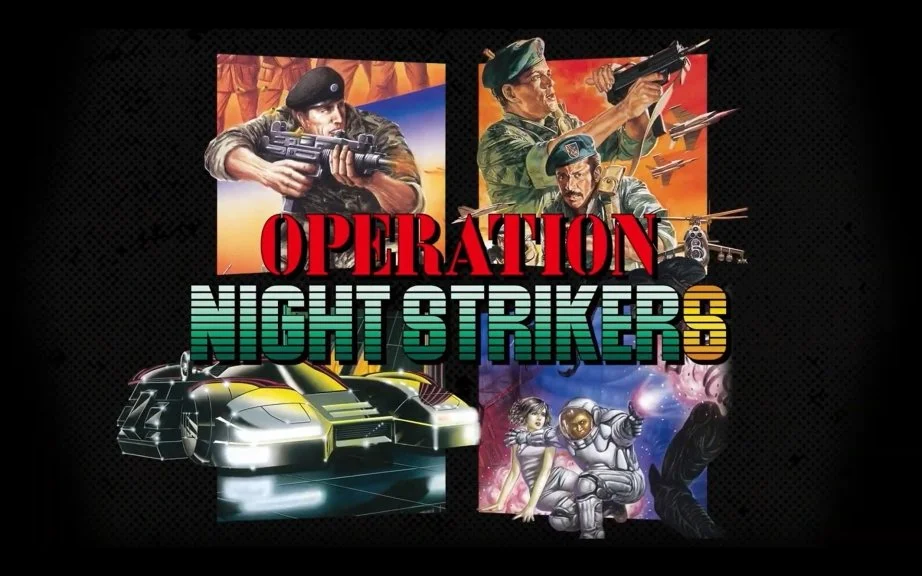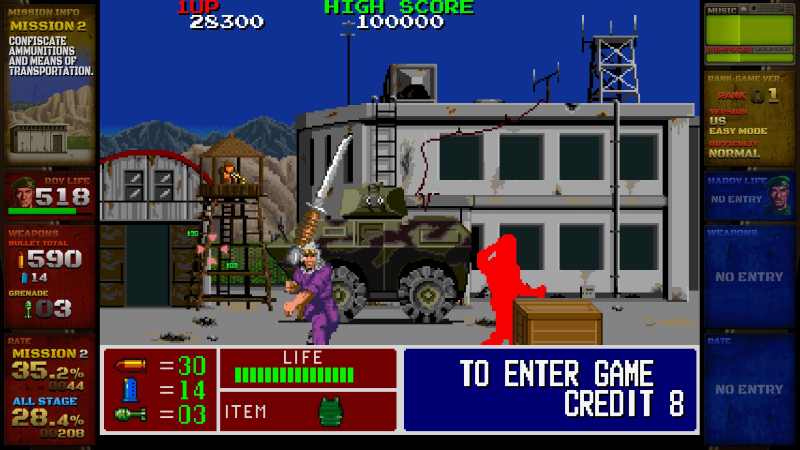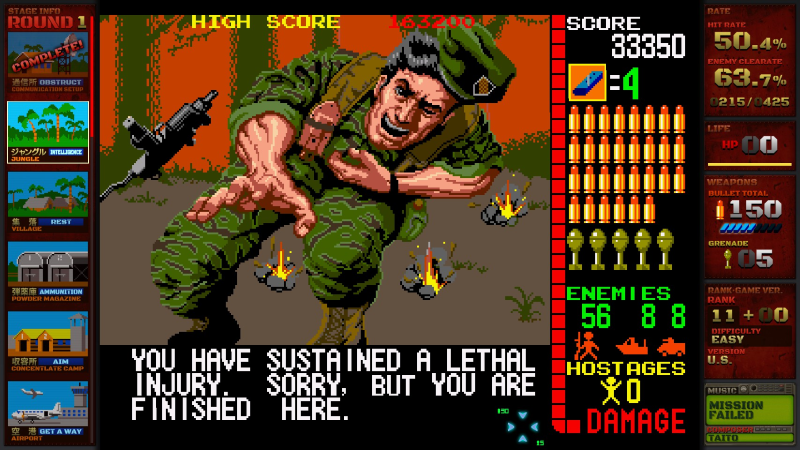Review: Operation Night Strikers
In the history of light gun games at the arcade, Taito was one of the earliest purveyors of the style, starting as early as Attack in 1976, and is still releasing light gun games as recently as 2011, with both Music GunGun 2 and Haunted Museum 2, but in the late 1980s, they released one title that rose above most others.
That title is Operation Wolf, in 1987, which rose to the top of arcade earning lists, going on to spawn several sequels, and just three years later, they also had another hit with Space Gun in 1990, taking a lot from the Alien movie series for its inspiration.
Operation Night Strikers is a new collection that aims to capture this era of late 1980s fame for Taito, collecting four of their famous titles from this period, including Operation Wolf, Operation Thunderbolt, Space Gun, and Night Strikers.
While the first three titles show them at the top of their game with the light gun genre, Night Strikers is a bit of an outlier in this collection, since it’s a rail shooter game, similar to Space Harrier, with no light gun functionality. While Night Strikers is a great game on its own, it doesn’t quite fit in the purpose of covering this collection here.
For anyone who hasn’t played the three light gun games in this collection yet, they are true classics of the genre and great games in their own right, starting with Operation Wolf. Its mix of 1980s action films (most notably the Rambo films) with a Vietnam War-era aesthetic made it a big hit and the visuals were top notch for their day, with all kinds of sprite scaling and advanced 2D graphical flair. Not to mention that the uzi-shaped gun on the machine featured some intense gun recoil for the first time on a non-mechanical light gun game.
The game is hard as nails, but very fun to play, even today, and this collection presents the arcade version in all its glory, as well a DLC that allows you to play the Famicom, NES, and Sega Master System ports of the game. There’s plenty of difficulty settings to make it less insane on the difficulty side, and it’s a joy to play this game even almost 40 years later, even though the console ports are all vastly inferior to the arcade version.
As for Operation Thunderbolt, the first sequel to Wolf, it changes things up a bit, where instead of only scrolling from side-to-side, like Wolf did, it introduces some levels that scroll forward or backward, even though most of the gameplay stays quite similar. It’s similarly fun, though generally a little more difficult than Wolf on certain settings.
There’s also a DLC that allows you to play the SNES port of Thunderbolt, which is quite different from the arcade version in many ways. It’s also worth mentioning that both Operation Wolf and Thunderbolt are strictly single-player games, with no multiplayer support, but Space Gun does allow for two players.
On the topic of Space Gun, it’s a great light gun title of the era with a sci-fi setting, including terrifying aliens and moon bases, and features a little more strategic gameplay than the Operation games, since it has mechanics of dismembering alien body parts in a strategic order in order to stop their incoming attacks. This also allowed for some nice splatter and gore effects in a time when it wasn’t very common in the genre yet.
It’s another great title that might even be the best of the bunch, and there’s a DLC that lets you play the watered-down Master System port. Even if that version is lacking overall, it’s still commendable that it’s included for historical reasons.
The menus of the collection itself are visually well-done and showcase lots of the great art that was made for these games, and there’s a lot of options for visuals, controls, and gameplay, but as far as the technical performance goes, there’s a few issues here and there. The PC version especially has some bugginess, whether it’s in the menus or the performance of the games themselves, and it leaves a bit to be desired on this front.
The extra information and stat tickers that M2 added for this collection are nice bonuses that add some extra history and understanding of the game’s systems while you’re playing, but other strange visual issues and things that occur with the PC port leave some sourness to the experience. For instance, the game only flashes the keyboard and mouse controls on the screen for about 1 second and then thrusts you into the main menu with no info of how to control it.
Now for one of the most important parts of what we need to talk about for a light gun review, which is the controls. This collection was released on PC and Nintendo Switch so far, and the options for controls are different between the two, so I’ll cover the caveats of each.
While the PC version does technically accept mouse input for aiming, it is incompatible with most PC light guns due to the way it processes the inputs. After trying four other PC light gun solutions, I did get the Arkade AR/gyro gun and an air mouse to work with the game, but they’re far from ideal. Also the menu controls not being clearly communicated when starting up the game makes playing with the mouse a little more confusing, since you can’t use the mouse/gun to navigate the menus, either.
The Switch version is surprisingly a better experience across the board, in terms of controls and performance. JoyCon gyro aiming is available for all three of the light gun games and works quite well, even though playing with gyro aiming is always a sort of caveat within itself. You’ll definitely need to be resetting your cursor position often, as always with gyro aiming, but it’s still more comfortable than playing with a mouse or analog sticks in general. The menus are still a bit of a mess and the gyro aiming is only available in 3 of the 7 DLC titles, but it still functions a little better than the PC version.
I’d really hope they can improve the PC version to function with light guns and fix some of the other small bugs in that version, as it would make it a solid collection and provide a legal way to play these games on your PC. The other elephant in the room is the price tag, which is mostly fine for the main game, but the cost of the DLC is insane for what you actually get, where it costs almost as much as the full game, and only contains a few inferior versions of the games.
While it is a nice effort and idea from Taito to make this collection happen and keep these games available, it falls short of standards for M2’s history of collections and ports. Hopefully they can improve the PC version to be a better experience that’s actually worthy of drawing light gun fans away from just playing these games with MAME emulation on their PC.









